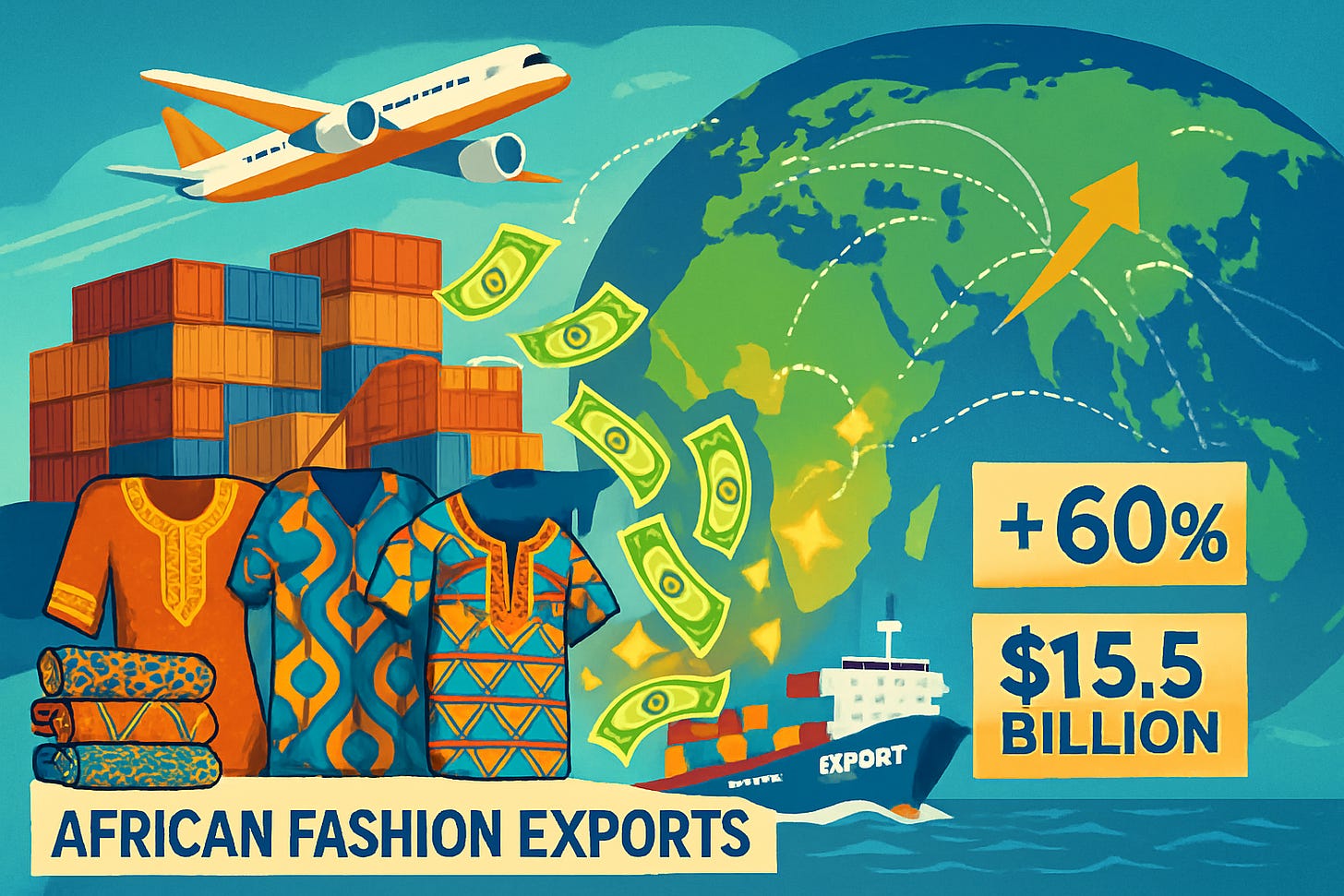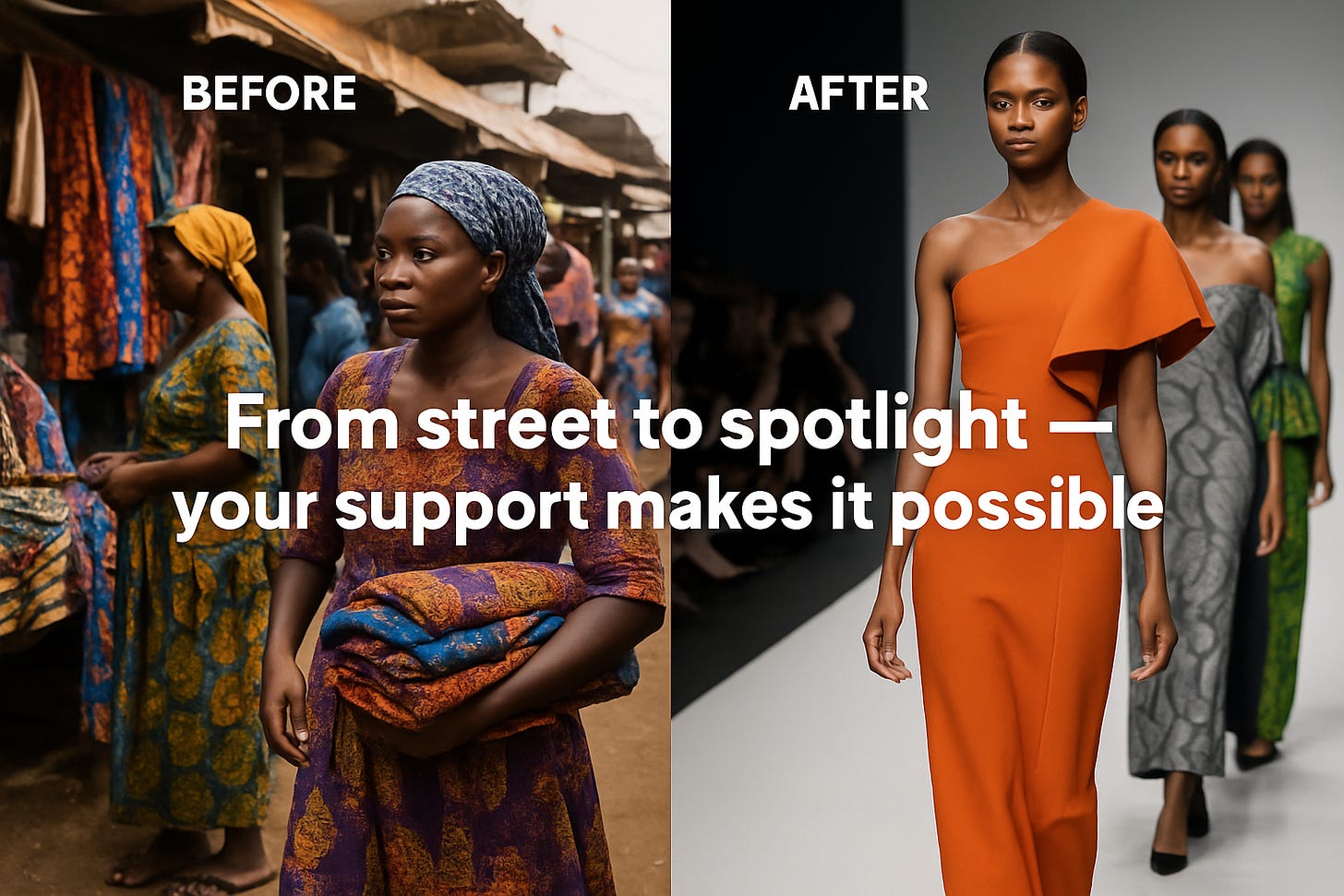Understanding How African Fashion Affects Foreign Exchange Markets
African Fashion and Global Economy
The African fashion industry is a vibrant mix of cultural heritage and modern innovation. It plays a key role in the continent's economy and offers a colorful way to showcase its history and creativity. The industry is growing in popularity globally and has a positive influence on the international currency market. Its impact extends beyond appearance, influencing foreign exchange (forex) markets through trade balances, currency values, and global investments. As more people value African fabrics and designs, selling them abroad generates additional revenue for African economies. Understanding this relationship is essential for policymakers, investors, and stakeholders in the fashion sector.
The African fashion industry has experienced remarkable growth, with its market value increasing significantly in recent years. Estimates suggest the sector was worth about $31 billion in 2020, with projections indicating it could exceed $50 billion by 2030. This growth is driven by a rising middle class, increasing urbanization, and a global appreciation for African aesthetics and craftsmanship. Although it currently accounts for just 1.82% of the worldwide fashion market, this share holds tremendous untapped potential.
Foreign Direct Investment (FDI) and Economic Growth:
The burgeoning African fashion scene has attracted significant foreign direct investment. International brands and investors are partnering with local designers, establishing manufacturing units, and investing in retail infrastructure. These investments create jobs, transfer technology, and develop skills, bolstering economic growth and stabilizing local currencies.
Increasingly, people worldwide are drawn to African fashion, which features fabrics such as Kente, Ankara, and Kitenge. This has increased the demand for these items, leading to a higher volume being sold to other countries. This brings in more foreign money, which helps African countries improve their financial position globally.
· Nigeria: Despite a past decline in its textile industry, Nigeria's fashion sector is a thriving market, contributing an estimated $6.1 billion to the country's GDP. While significant FDI is needed to revive its textile manufacturing, the fashion industry's growth signals strong domestic consumption and emerging export potential.
· South Africa: The high-end fashion design industry in South Africa contributes over 1 billion rand to the country's GDP, showcasing a vibrant local market and a growing appetite for designer wear. FDI here often targets luxury brands and established design houses, aiming to leverage their existing infrastructure and market presence.
· Kenya: Kenya has successfully attracted FDI into its apparel sector, particularly from transnational Asian and Indian-East African investors, largely due to preferential trade agreements like the African Growth and Opportunity Act (AGOA). This has led to job creation and economic development in the clothing industry.
· Egypt: As a long-standing textile and apparel manufacturing hub, Egypt continues to attract FDI, particularly in its ready-made garment sector, benefiting from its strategic location and trade agreements. The focus here is often on large-scale production for export markets.
FDI not only brings capital but also critical expertise, technology, and access to global markets, all of which are vital for the sustained growth and international competitiveness of African fashion industries.
Export Dynamics and Foreign Exchange Inflows
African fashion, encompassing textiles, clothing, and accessories, has witnessed a surge in global demand. This increase is attributed to the distinctive designs and sustainable practices of African designers. Consequently, exports have increased, resulting in higher foreign currency inflows. For example, Nigeria's fashion industry is expected to reach $1.31 billion by 2023, with an anticipated annual growth rate of 10.03% from 2023 to 2027.
· Nigeria: Traditional fabrics, such as Aso-Oke, are gaining international recognition. In 2023 alone, Aso-Oke exports increased by 15%, generating approximately $120 million in foreign exchange revenue. This highlights the potential for niche traditional products to become significant forex earners.
· South Africa: While South Africa is a major importer of garments, its designers are making inroads into international markets, with exports contributing to foreign exchange earnings. The focus on high-end fashion and unique designs helps command better prices in global markets.
· Kenya: Kenya's apparel exports to the United States under AGOA have seen significant growth, reaching $470 million in 2024. This demonstrates the direct link between market access and foreign exchange generation for the country.
· Egypt: Egypt's textile and apparel exports are a major contributor to its foreign exchange earnings, leveraging its established manufacturing base and trade agreements with various regions.
The growth in exports not only brings in foreign currency but also creates a virtuous cycle: increased demand leads to more production, which in turn creates jobs and stimulates local economies. African designers and fashion houses are leading this economic transformation. By exporting their designs globally, they earn foreign exchange and promote cultural exchange, as well as worldwide appreciation for African artistry. Each piece of clothing sold internationally helps boost their foreign revenue, showing how cultural exports can support economic stability. These export activities improve the trade balance, strengthening local currencies against major counterparts. A favorable trade balance can lead to currency appreciation, making imports cheaper and potentially easing inflationary pressures.
Empowering Local Economies: Beyond Foreign Exchange
The ripple effects of the fashion industry's success are felt throughout local economies. From cotton farming to clothing manufacturing, production provides jobs for millions, supporting livelihoods and uplifting communities. Additionally, exporting these products plays a key role in reducing trade deficits and stabilizing the local currency against foreign currencies.
The influence of African fashion extends far beyond mere financial figures. It serves as a strong driver for local economic growth, encouraging entrepreneurship, generating employment opportunities, and preserving cultural traditions.
· Job Creation: The industry employs millions across the entire value chain, from cotton farmers and textile workers to designers, tailors, models, and marketers. This is especially important in a continent with a large youth population and high unemployment rates.
· Skill Development: Industry growth requires building skills in design, garment construction, marketing, and business management, leading to a more skilled workforce.
· Preservation of Craftsmanship: African fashion celebrates traditional techniques, textiles, and artistry, ensuring the conservation of rich cultural heritage and indigenous knowledge.
· Value Chain Development promotes growth in related industries like textile manufacturing, accessory production, logistics, and retail, building a more diverse and resilient economy.
Some African countries have implemented tariffs and trade restrictions to counteract these effects. South Africa, for instance, introduced a 45% import duty on all imported clothing items to level the playing field for local retailers.
Challenges and Opportunities:
African fashion has excellent potential, but it faces challenges as it gains market traction. Issues like the need for higher production capacity, quality control problems, limited access to financing, competition from cheap imports, and trade barriers can slow growth. Addressing these issues requires coordinated efforts from governments, industry leaders, and global partners to create a supportive environment. Still, working on trade agreements and adopting sustainable, technology-driven production methods can also open significant growth opportunities.
Despite its immense potential, the African fashion industry faces several challenges:
· Limited Access to Finance: Small and medium-sized enterprises (SMEs) in the fashion sector frequently face challenges in securing sufficient funding for expansion, technological upgrades, and marketing initiatives.
· Infrastructure Deficiencies: Inadequate infrastructure, including reliable power supply, transportation networks, and manufacturing facilities, hinders production efficiency and competitiveness.
· Supply Chain Gaps: Challenges in sourcing quality raw materials locally and fragmented supply chains can result in increased production costs and longer lead times.
· Intellectual Property Protection: Protecting designs and brands from counterfeiting and appropriation remains a significant hurdle.
· Policy and Regulatory Environment: Inconsistent policies, high import duties on raw materials, and complex export procedures can impede growth.
However, these challenges also offer significant opportunities for investors and innovators:
· Technology Adoption: Investing in technology for design, production (e.g., 3D printing, sustainable manufacturing), e-commerce platforms, and digital marketing can revolutionize the industry.
· Sustainable and Ethical Fashion: Growing global demand for sustainable and ethically produced goods presents a unique opportunity for African fashion, given its traditional emphasis on natural materials and artisanal production.
· Intra-African Trade: The African Continental Free Trade Area (AfCFTA) offers immense potential for expanding intra-African trade in fashion, creating larger regional markets and reducing reliance on external markets.
· Capacity Building: Investments in training and skill development programs can address the talent gap and enhance the quality and competitiveness of African fashion products.
· Brand Building and Marketing: Strategic investments in global marketing and brand building can elevate African fashion to a prominent position on the international stage.
Call to Action: Invest in Africa's Next Big Export
The African fashion industry is expected to surpass $50 billion by 2030, but most designers still encounter obstacles related to funding, logistics, and international reach.
For investors and VCs, the African fashion industry represents a compelling frontier. It offers:
· High Growth Potential: A rapidly expanding market with significant room for innovation and scaling.
· Diversification: An opportunity to diversify portfolios into a resilient sector with strong cultural roots.
· Impact Investment: The chance to generate financial returns while contributing to economic empowerment, job creation, and cultural preservation.
· Untapped Value: A sector ripe for disruption and value creation through technology, sustainable practices, and improved market access.
Investing in African fashion is about more than just following trends; it's about supporting the future of a continent, its creative talent, and its growing global influence. By supporting this industry, investors can help shape a fairer and more vibrant global economy while also earning substantial financial returns.
1Together, let us make African fashion the world’s most inspiring success story.
Visit our website - https://www.pashione.co



